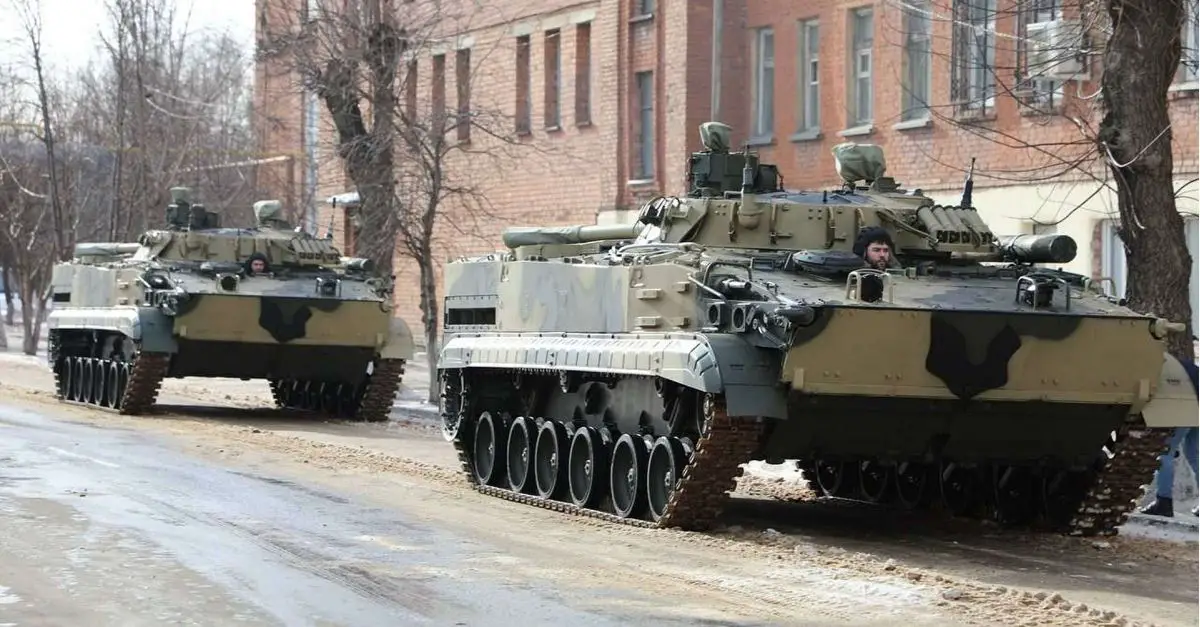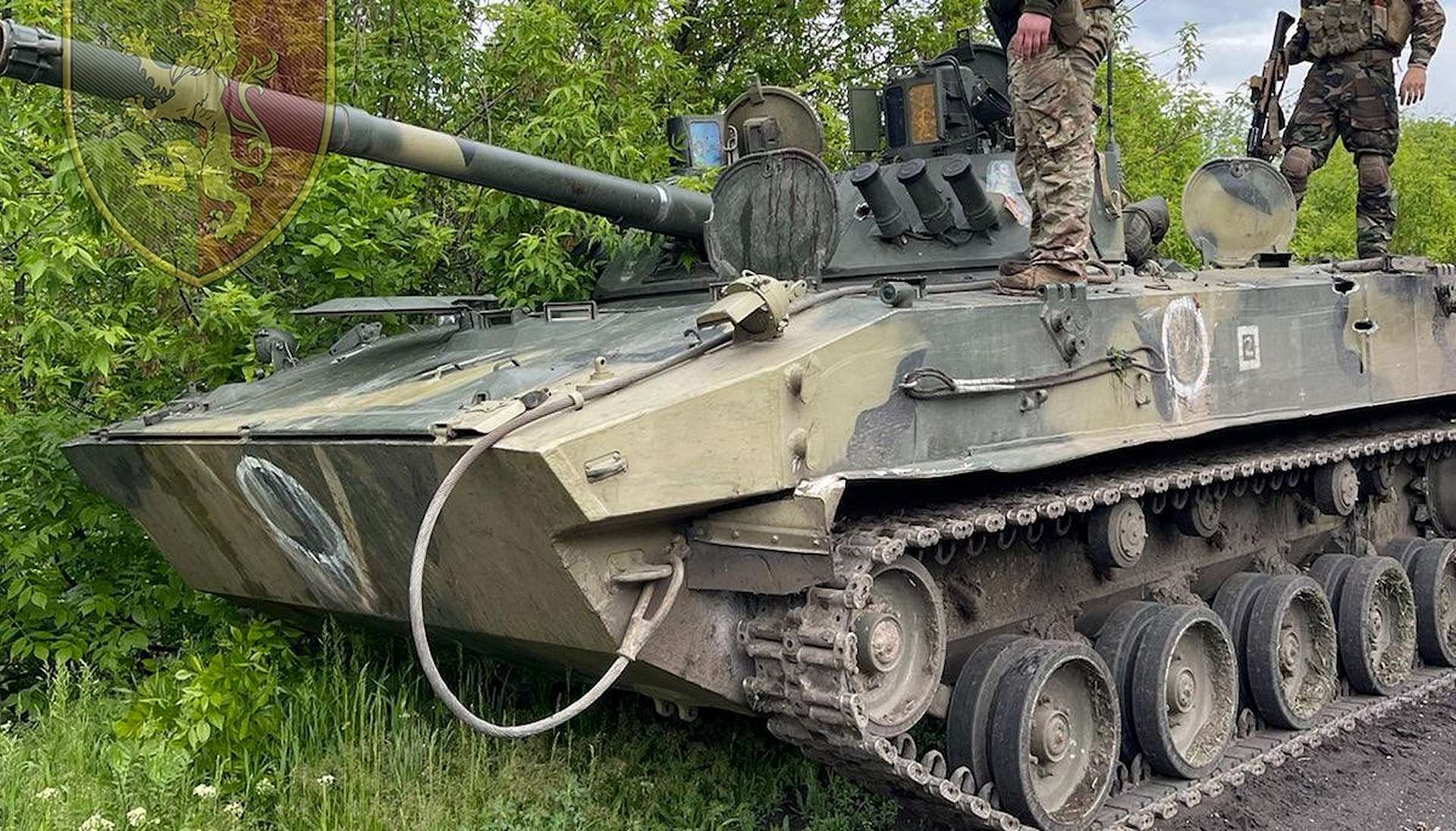Breaking news
Russian Firm Kurganmashzavod Delivers Additional BMP-3 and BMD-4 IFVs Amid Escalating Conflict in Ukraine.
Recently, the Russian defense company Kurganmashzavod, the renowned manufacturer of armored vehicles, announced the delivery of a new batch of BMP-3 and BMD-4M infantry fighting vehicles to the Russian army for immediate deployment in Ukraine. This marks the second delivery of these types of armored vehicles this year, signaling intensification in military preparations in Ukraine.
Follow Army Recognition on Google News at this link

Russian company Kurganmashzavod delivers more BMP-3 Infantry Fighting Vehicles to the Russian army. (Picture soirce Kurganmashzavod,)
Kurganmashzavod, a key player in the Russian defense industry primarily known for its BMP series, reported that the volume of equipment delivered to the Russian forces this year has increased by 1.5 times compared to the same period last year. The company’s ability to boost production comes despite the ongoing international sanctions imposed on Russia following its February 2022 invasion of Ukraine.
The increase in manufacturing and delivery of these advanced fighting vehicles underscores the Russian defense industry's resilience and its strategic focus on addressing the urgent needs of its armed forces engaged in the conflict in Ukraine. The BMP-3 and BMD-4M vehicles are among the most advanced in their class, equipped to provide enhanced firepower, mobility, and protection for ground troops in diverse combat scenarios.
The continuation of these deliveries highlights the escalating nature of the conflict and the significant role of domestic military production in Russia's operational strategy. The international community continues to watch closely as the situation develops, with further economic and diplomatic repercussions likely to follow in response to the intensification of military activities in the region.
The BMP-3 and BMD-4M infantry fighting vehicles are designed to transport troops while offering substantial firepower and armor protection, making them crucial assets in the conflict zones like Ukraine. In such environments, these vehicles serve dual roles: providing infantry with mobility across challenging terrains and supporting them with significant direct fire support against enemy forces. The BMP-3 is particularly effective in open and mixed terrains, while the BMD-4M, being lighter and more mobile, is suited for airborne operations, allowing Russian airborne troops to be rapidly deployed and supported with heavy armament in contested areas.
The BMP-3 is a Russian infantry fighting vehicle (IFV), widely recognized for its comprehensive firepower and versatility on the battlefield. Introduced in the late 1980s by the Soviet Union, it was designed to replace older models of the BMP family, offering significant enhancements in terms of armament, mobility, and protection.
The armament of the BMP-3 is notably robust and diverse, making it one of the most heavily armed IFVs in the world. Its primary weapon is a 100mm 2A70 rifled gun, which can fire both conventional shells and laser-guided anti-tank missiles, providing a unique dual capability to engage both soft targets and armored vehicles effectively. This gun is supplemented by a 30mm 2A72 autocannon, which offers a high rate of fire, suitable for engaging light armored vehicles, aerial targets like helicopters and low-flying aircraft, and infantry.
The BMP-3 is also armed with one coaxial 7.62mm PKT machine gun positioned next to the main and secondary cannons. For further self-defense and close-quarter combat capabilities, it has two bow-mounted 7.62mm machine guns, which provide frontal protection and suppressive fire capabilities. The vehicle is also equipped with smoke grenade launchers to cover its movement or retreat during combat operations.

The BMD-4M is an airborne infantry fighting vehicle armed with one 100 and one 30mm automatic cannons.
The BMD-4M is a modern Russian airborne infantry fighting vehicle, an upgrade of earlier BMD series models, specifically designed for airborne assault operations. Introduced into service with Russian airborne troops in 2008, it is lighter and more compact than its counterparts like the BMP series, allowing it to be air-dropped and thus providing rapid deployment capabilities to airborne units. The BMD-4M enhances the mobility, firepower, and survivability of paratroopers behind enemy lines.
The main armament of the BMD-4M includes one 100mm 2A70 gun, which also doubles as a launcher for the Arkan guided anti-tank missiles. This capability allows the BMD-4M to engage both armored vehicles and tanks at a distance of up to 6,000 m. Complementing the main gun is a 30mm 2A72 autocannon, which provides a high rate of fire essential for engaging lighter armored vehicles, enemy personnel, and low-flying aerial targets such as helicopters and drones.
Second armament of the BMD-4M includes a coaxial 7.62mm PKT machine gun to deliver suppressive fire against troop concentrations and to defend against infantry attacks. The vehicle is also equipped with modern digital fire control systems and night vision equipment, greatly enhancing its accuracy and lethality in night and adverse weather operations. For self-protection, the BMD-4M features smoke grenade launchers that can create a smoke screen to obscure the vehicle from enemy view, thereby enhancing its survivability on the battlefield. This combination of mobility, airborne deployment capability, and heavy armament makes the BMD-4M a critical asset in modern combat operations, especially in rapid deployment and high-mobility scenarios.


























